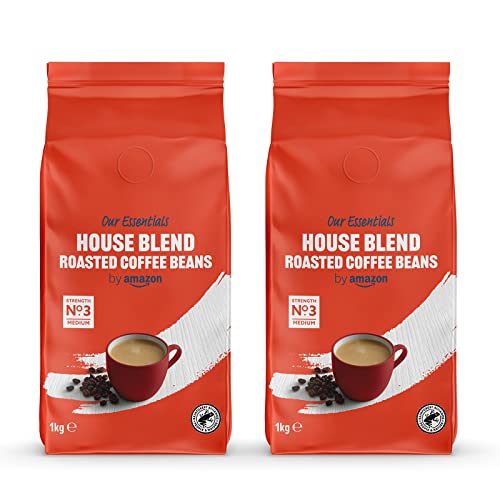The Best Fresh Coffee Beans
If you're looking to have the best coffee, you should purchase whole beans at a local coffee roaster or shop. A shop that sells several blends would be a good option.
Thunder Bolt by Koffee Kult is a dark French Roast with an intense, satisfying flavor. It's a little more expensive, but it's organic1, fair-trade2 and doesn't contain any additives.
Ethiopian Yirgacheffe
Ethiopian Yirgacheffe is a coffee bean prized for its refreshing flavor and delicate scent, is among the world's most sought-after coffee beans. It's also an excellent source of antioxidants. coffeebeans is best to make it without milk or sugar to preserve the distinctive flavor profile. It goes well with dishes that are savory to offset the sweet-salty. It's an excellent afternoon pick-me up.
Ethiopia is often called the birthplace of coffee. According to the story, a goatherder named Kaldi noticed that his flock seemed more active after eating berries of red that were growing near his home. He tried the berries and found that they gave him plenty of energy. The herder then spread the berry among his family and this was how coffee first became popular.

The coffee grown in the Yirgacheffe region of Sidamo in Ethiopia is often wet-processed, also known as "washed." This process helps to eliminate bitter flavors and produces a bright, clean taste. During the mid-2000s, global coffee prices soared to levels that were unsustainable for many farmers across the world, including in Ethiopia. However the Yirgacheffe Coffee Farmers Cooperative Union (YCFCU) was capable of helping the farmers stay in business through their fair trade initiatives and the ability to bargain with the market. This led to the creation of a new era of single-origin Ethiopian coffees with fruity flavors and are referred to as "new naturals". Today people around the world are enjoying the distinctive, floral and citrusy flavor of the Yirgacheffe beans.
Geisha
Geisha is one of the most expensive coffee beans available. It has a delicate tea flavor that has hints of mango, peach and raspberry. It also has a soft taste similar to black tea. But does the price really justify it?
The Geisha variety was first discovered in the highland region of Gesha (it was misspelled throughout the process) in Western Ethiopia in the 1930s by a British consul. The seeds were then brought to CATIE, Costa Rica, before being brought to Panama by Francisco Serracin (also known as Don Pachi). When the Peterson family began to experiment with it at their Hacienda Esmeralda farm, they discovered that it had extraordinary flavors with balance and finesse.
Geisha is more than just a great coffee. It has a profound impact on the communities who produce it. It allows farmers to invest their profits in improving their farming practices and processes. This ultimately leads to better quality for all of the coffee varieties they grow.
Many coffee drinkers are uninterested in trying Geisha coffee due to its expensive price. Geisha coffee is definitely worth the price. The time of the sakura is the best time to drink it, so do yourself a favor and grab some!
Ethiopian Harrar
Often considered one of the best coffee beans in the world, the Ethiopian Harrar is full-bodied and exotic. This is a dry processed (natural) arabica that hails from Ethiopia's southern Oromia region. It is characterized by its acidity and the wine-like fruitiness, and a pronounced mocha flavor.
The coffee is harvested in the spring, and then dried and fermented to release its aromas and flavors. In contrast to most commercial coffees this coffee is free of chemicals and is low in calories. It has numerous health benefits, like decreasing the risk of developing Alzheimer's. It is also rich in antioxidants, and contains a variety of other nutrients. It is recommended to drink a cup Ethiopian Harrar while on an empty stomach to get the most benefits.
Ethiopian Harrar is among the most sought-after coffees around the world and comes from one of the most prestigious growing regions, the most eastern Harrar. It is grown at the highest elevations in the region, near the walled city that was once a part of Harrar. This coffee has a unique flavor and can be enjoyed in the form of espresso or Latte.
The coffee is then sorted and harvested by hand. It is dried in traditional cloth bags. This method preserves aromas and increases flavor. It is also a more sustainable method. It can be brewed using any brewing method but is especially suited to a French press or pour over.
Monsooned Malabar
One of the most unique and well-known beans in the world Monsooned Malabar is a sweet woody, nutty and sweet coffee with a surprisingly low acidity. Its name is derived by a process called "monsooning," as well as its origin the region that is the most arid in India in the mountainous area of Malabar that encompasses Karnataka and Kerala and is protected by geographical indication status.
The origins of this coffee is apocryphal. During the British Raj period, large wooden ships were utilized to transport coffee to Europe. In the course of the voyage the wind and humidity caused the beans to naturally weather, resulting in a pale off-white color. Upon arrival in Europe the beans were discovered to have a distinct and desirable flavor characteristic.
Monsooning is a distinct and specialized method of processing coffee that is still practiced today in Keezhanthoor. This hamlet that is high-end located in the Western Ghats is surrounded by small traditional tribal farmers who are devoted to delivering the highest quality beans. They produce a rich, aromatic, smooth coffee with notes of baker's cocoa, syrupy sweetness and mild vanilla.
This coffee is great for espresso or cafe crème. It is delicious on its own or paired with fruitier coffees. It is also a popular choice for pour-over, for instance, in a Bialetti Moka pot. Monsooned Malabar is also heat resistant due to its lower acidity.
